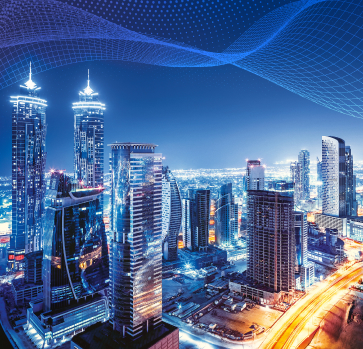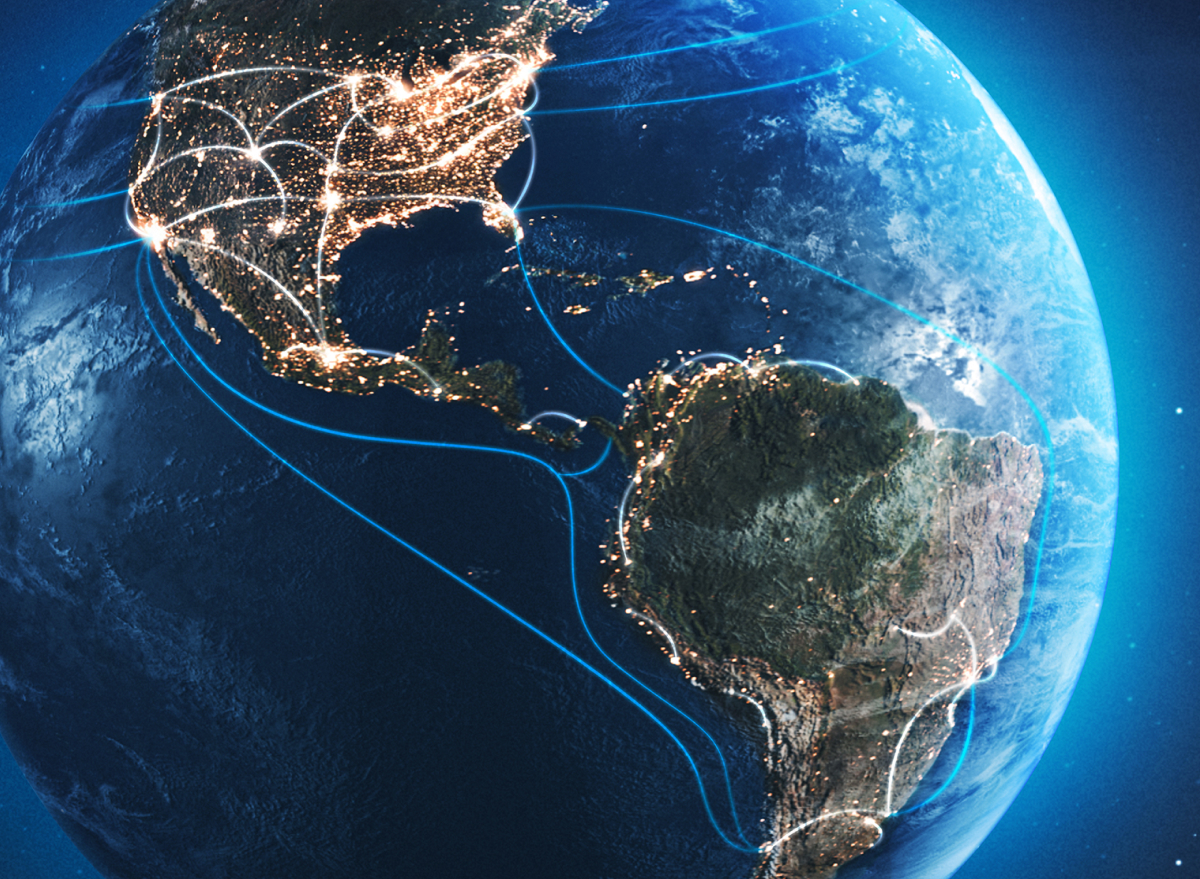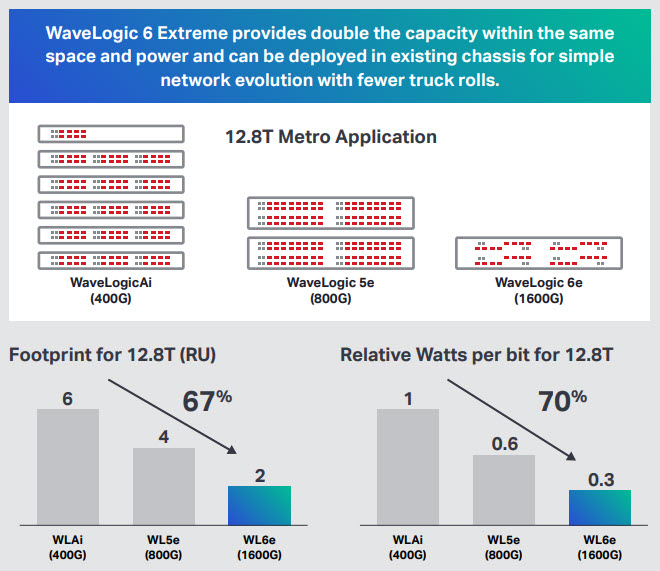Networks across the globe are enabling so much good for our society. As operators continue to invest to meet these growing demands, they need to find every opportunity to infuse sustainability into their network operations. The good news is that there are so many ways to do so.
Network operators around the globe continue to yield enormous benefits for the planet and society by enabling smart cities, helping industries reduce waste and emissions, aiding healthcare as they save more lives, or providing greater resources for education to support today’s youth on their path to success. But as an ESG professional, these benefits come with an acute awareness of the potential environmental impacts operators want to address due to the increasing demands on their infrastructure. The good news is that this is inherently important to us at Ciena, and we are committed to helping service providers create and maintain sustainable networks at every level and step.
Working together towards mutual goals
Many of the world’s telecommunications companies are setting ambitious climate change targets that align with the Paris Agreement’s goal to keep global warming below 1.5 degrees Celsius from pre-industrial levels. These companies recognize, as we do, that improving the sustainability of their networks is one of their greatest opportunities to meet these targets, since network operations are one of the most energy-intensive part of a service provider’s footprint, with total energy use increasing by approximately 10 percent year over year. But connectivity and sustainability do not need to be mutually exclusive –there are many touchpoints in which service providers can reduce the environmental impacts of networks while meeting the needs of society.
Let’s take a look at how we at Ciena are factoring in your sustainability goals and requirements into our various offerings.
Innovating for sustainability
One of the most effective strategies to reduce emissions in your networks is through network transformation. Thanks to continuous innovation, it's now possible to increase network capacity while reducing the energy and space required to operate them and minimizing the downstream and upstream impacts of materials and waste.
Take, for example, our recently launched products - WaveLogicTM 6 Extreme (WL6e) and WaveRouterTM. WL6e can double the wavelength capacity of the previous generation while also reducing the materials, waste, rack space, and power per bit by 50%. In simpler terms, that's a two-for-one deal.
WaveRouter offers twice the power efficiency for the same routing capacity as alternative routing and switching options. It can be deployed flexibly in non-adjacent racks and has optimized front-to-back air cooling that helps to keep energy consumption under control. Its innovative design takes up only one-third of the space required by other products, and the angled faceplates reduce cabling needs, allowing for passive DAC cables that use zero power and are ultra-thin, resulting in fewer materials used.
At Ciena, we are conscious of providing more capacity while helping our customers drive toward their sustainability goals. We can even quantify the positive impact of our innovation. Our models indicate that over a ten-year period, we've reduced power per bit by 90% and avoided over 4.5 million tonnes of CO2e from entering the atmosphere as a result of the efficiencies with each successive generation of WaveLogic. As people consume more data, decreasing power per bit will help keep energy consumption and emissions in check. In addition, getting more capacity with fewer units and smaller forms will result in fewer materials used, less waste, and lower emissions from shipping and packaging.
Automating for efficiency
Even without the latest equipment, advanced software provides opportunities to keep your networking humming while cutting your emissions. As my colleague Kevin Wade recently wrote, intelligent automation, Software Defined Networking (SDN), and virtualizing services with Blue Planet can help network operators towards their carbon reduction goals. For instance, virtualized services can help operators reduce “truck rolls” and the need for discrete network devices by taking advantage of Cloud-based Network Functions (CNFs). Intelligent automation and SDN help customers improve the efficiency of their workforce and their networks to ultimately reduce the amount of network hardware required and associated energy, materials, waste, and emissions.
Our Manage, Control and Plan (MCP) applications provide network planning, analytics, software control, and automation to simplify and optimize multi-layer network performance, making the most out of the resources that are deployed. For instance, our Liquid Spectrum™ apps increase visibility into our customers' optical networks to enable insights that drive more capacity thus reducing power per bit. The Channel Margin Gauge and Photonic Performance Gauge apps help our customers harvest latent capacity in their network, while PinPoint OTDR enables technicians to remotely determine the precise location of fiber faults so that they can dispatch fleets to the right location, reducing unnecessary dispatches, travel time and related emissions.
Helping our customers get more from their network investments is central to our approach at Ciena, and the positive impact of both MCP and Blue Planet is that it enables network operators to integrate sustainability into their networks, reduce waste, energy and gas use, and associated emissions.
Tuning up through services
For operators, networks are in a perpetual state of change. They face a constant drive for more and better bandwidth while also ensuring the networks are run cost-effectively, reliably, and sustainably. Network transformation services help operators address these needs and achieve their goals by identifying outdated equipment, eliminating unnecessary network elements and the energy they consume, and ensuring the network meets operational and sustainability objectives.
If an operator is not ready for a full network transformation, Ciena’s Spectrum Defragmentation services help to identify and monetize unused photonic spectrum, ultimately freeing up that valuable resource to get more out of equipment already in place. By getting more life out of equipment that may seem to be at its operational limit, Defrag can help reduce waste and overall carbon footprint.
Similarly, Ciena’s equipment refurbish service extends the usable life of decommissioned equipment by restoring and supporting it to an ‘as new’ condition. Alternatively, when upgrading to new hardware, Ciena’s equipment recover and reclaim services enable customers to securely and sustainably recycle their used equipment so that components can be reused. Both programs help to extend the life of network equipment and keep products out of landfills.
It’s so important to us
Network operators across the globe are striving to meet the connectivity needs of today while building for the possibilities of tomorrow. As you do so, you are also working towards increasingly ambitious climate change goals. It is deeply important to us at Ciena to help you maximize every opportunity to make your networks more efficient, with less energy, space, waste, and materials that will not only help you reach your sustainability goals but also help the planet. And with the many touchpoints where sustainability can be infused into your network, we can continue to remain optimistic.







